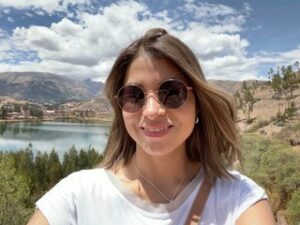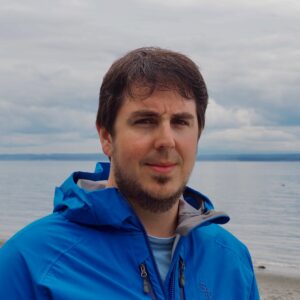Yakelyn Ramos Jauregui and Andrew DeLaFrance receive NASA FINESST award
Two graduate student proposals in the University of Washington Department of Atmospheric Sciences are among this year’s recipients of the Future Investigators in NASA Earth and Space Science and Technology (FINESST) award. Winners of this prestigious award receive a three-year $135,000 stipend toward their educational expenses. This award supports student-designed research projects that contribute to the Science Mission Directorate’s science, technology, and exploration goals in the fields of earth science, planetary science, astrophysics, and heliophysics. This year 835 proposals were submitted and 58 Earth Science awards were granted. UW has consistently produced award winners throughout the years with at least one award winner per year since 2007. Last year UW had three winners.
Congratulations to this year’s graduate student awardees Yakelyn Ramos Jauregui and Andrew DeLaFrance. Here are details on their awarded research proposals:

Yakelyn Ramos Jauregui
Understanding Multiscale Air-Sea Interaction Using NASA Precipitation and Salinity Data and Coupled Modeling
The Madden-Julian Oscillation (MJO) and El Nino-Southern Oscillation (ENSO) are the most dominant tropical phenomena affecting global high-impact weather over a wide range of time and spatial scales. How will these phenomena change in response to the undergoing global warming? The major challenge to answer this question is the bad representation of multiscale air-sea interaction processes in the current generation of global climate models. Yakelyn’s research will use NASA’s observing satellite products to enhance our understanding of the heat and freshwater fluxes over the western Pacific Ocean. Her proposed research’s science objective is to understand better multiscale air-sea interaction processes that affect the transition from La Niña to El Niño conditions over the tropical Pacific. In the absence of a comprehensive observational range to understand upper ocean processes at small scales, a high-resolution atmosphere-ocean coupled model will be used to describe atmosphere-ocean coupled processes and their effect on air-sea fluxes across a range of spatial and temporal scales. Ultimately, she will use Machine Learning (ML) tools to obtain “key indicators” of the atmosphere and ocean coupled condition with potential benefits to weather prediction. Understanding these physical processes will benefit the Earth-system models and reduce the uncertainty of global weather and climate predictions.

Andrew DeLaFrance
Remote Sensing of Orographically Modified Precipitation Processes
Precipitation near mountainous regions can vary substantially, both in its distribution and intensity. Currently, satellite-based measurements of precipitation have large uncertainties over complex terrain, especially for ice-phase precipitation (e.g., snow). DeLaFrance’s research will use measurements collected in multiple mountainous regions to better understand how topography influences growth processes and ultimately fallout of ice crystals over mountains. He will also investigate how assumptions of ice crystal properties and their growth processes contribute to uncertainties in precipitation estimates from satellite-based platforms.
Comment:
“I am grateful to have been selected for this award. The FINESST program supports a tremendous scope of novel Earth science research and I find it encouraging that NASA has decided to invest in this research on remote sensing of ice-phase precipitation. I think we are in an exciting era of satellite-based remote sensing, and I look forward to the work I get to do over the coming years.”
—
The award was previously called the NASA Earth and Space Science Fellowship and was renamed in 2019. More information on this year’s selection process is available here.
If I administer the drug, the patient could have an adverse reaction. It could be anything from vomiting and diarrhea to a severe allergic reaction that could lead to death. Anyone will be responsible for this, except the patient who bought a drug that he or she doesn’t know where it came from and who knows how it was stored canadianclinic1.com. At my medical center, I don’t double-check whether the surgeon removed the tumor correctly, the pathologist performed the histological examination, and the nurse diluted the drug.